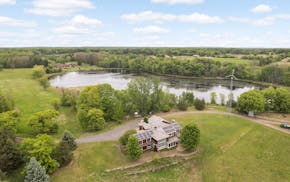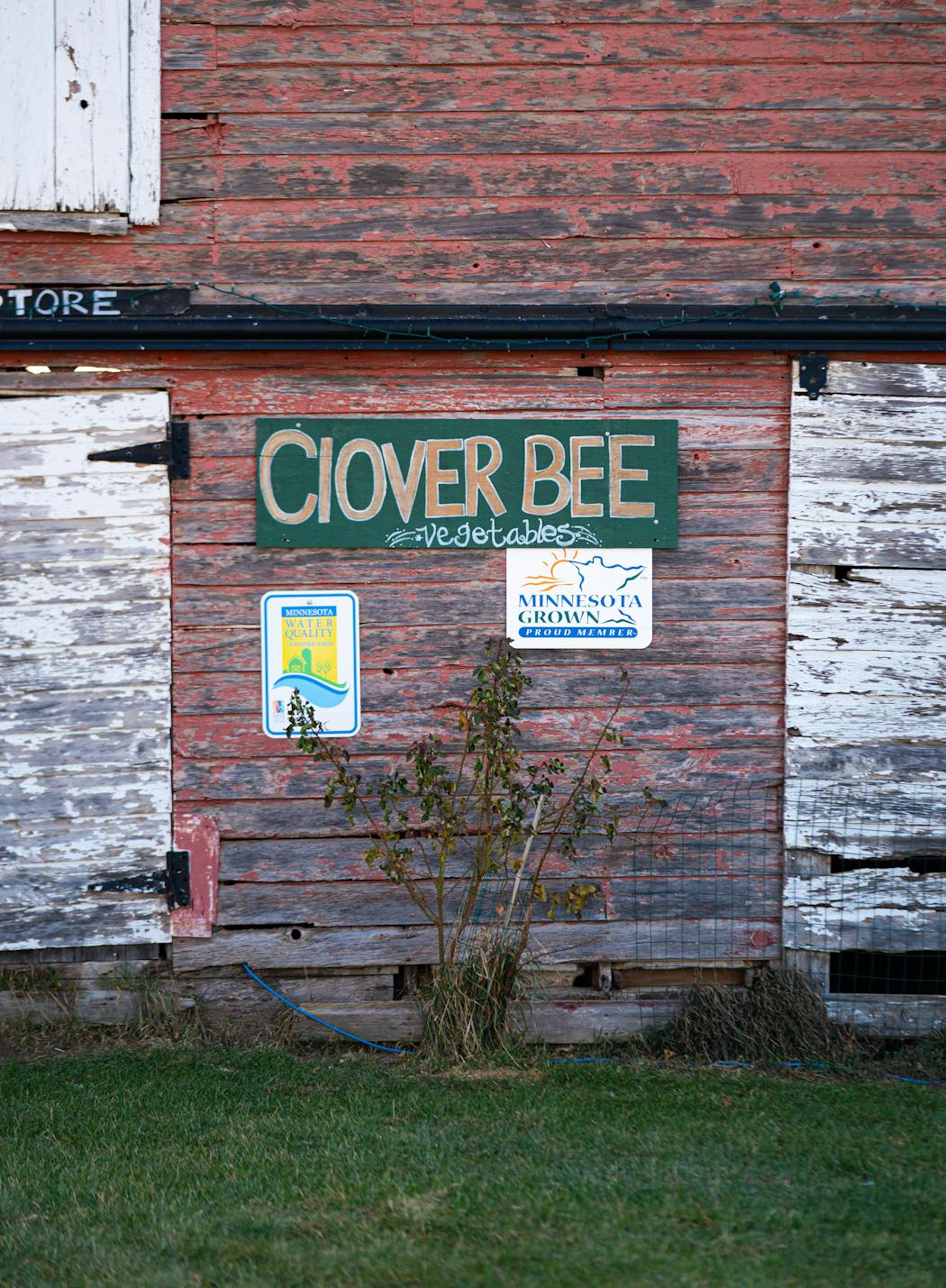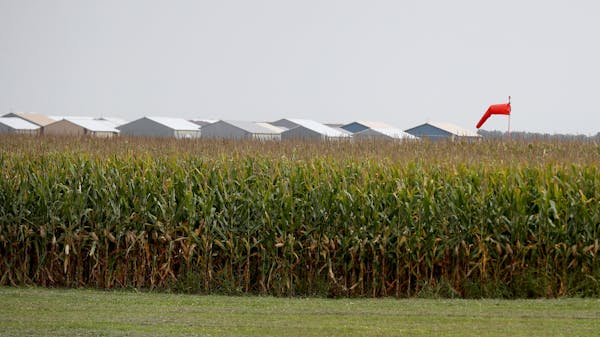SHAFER, Minn. — Andrew Hanson-Pierre was only back at the farm for a brief spell after his morning gig as a fill-in school bus driver when Margaret, his wife and fellow farmer, had to leave for her own off-season work as a substitute teacher.
They shared a quick hug before Margaret headed to Chisago Lakes Elementary on that morning in early December, leaving Andrew to contemplate how to keep busy all day on their vegetable farm just west of the St. Croix River.
Minnesota's annual plunge into the deep freeze forces farmers to leave fields fallow for the better part of half a year. It's when non-farmers start to wonder: What do you do all winter?
"I get asked that question all the time," said Matthew Fitzgerald, a grain farmer near Hutchinson.
The four seasons dictate the farmer's workflow more than most professions. As winter arrives in Minnesota, farmers shift gears to focus on their business dealings — and maybe even to take some much needed respite.
"I'll read. Go for a hike later," Andrew Hanson-Pierre said, standing under a dim winter sun as wind swept over Clover Bee Farm. "Yesterday I baked bread. There's not a lot of time to cook in the summer. There's some clearing to do in the yard. And we're renovating the farmhouse, which has been sort of never-ending."
A farm is a small business, Fitzgerald likes to remind people. The four winter months when he's not planting, cultivating, harvesting and transporting crops is when he can concentrate on front-office demands. That means planning, marketing, lining up buyers, tax preparation and finances, networking with other farmers and learning the latest in ag techniques and technology.
"By the end of the growing season, I'm tired of being in a tractor and my body's shot," Fitzgerald said. "By the end of winter, I'm tired of looking at a screen and filling out Excel spreadsheets."
Many Minnesota farmers are now reviewing what they did right in a year that ended with strong crop yields for many despite a persistent drought.
And while some might even carve out a bit of actual downtime, not every type of farmer gets such a long break from outdoor demands. Livestock still need to be fed and tended daily, and dairy farmers have to keep milking all winter, often multiple times a day.
"We always say we get it down to just time-and-a-half in the winter months," said Joe Borgerding, a longtime dairy farmer in western Stearns County. "That's our choice — I'm not complaining. I never wanted a job where I had to sit in traffic or take my chances with a boss."
Borgerding recently sold his dairy herd to his two adult sons. He still farms with them, but he said it's finally allowed for a slightly easier daily schedule in the winter. Even in the busier years, he said, he and his wife — who manages the farm's finances — made a point to go someplace warm for at least a week in the winter.
"I've seen too many farmers that are burned out and don't know it," he said.
Anne Schwagerl, who farms near Browns Valley, said most farmers she knows have a hard time sitting still even in the colder months. She reeled off a long list of winter tasks but said it won't all be work.
"I think we'll be firing up Netflix a good bit more," she said.
Livestock farmers who want even a day or two away from the farm need to come up with a plan. A few weeks ago, Dale Stevermer, a pork producer south of Mankato, was meeting with a neighbor who will take care of the hogs while he and his wife head to Florida.
"We're out there with the animals twice a day, every day," said Stevermer, who has about 2,000 hogs. "If you're not able to be there, you have to find someone else to do the work."
Stevermer also cultivates about 450 acres of corn and soybeans. Growing season is "when things can get really busy," he said.
Even as the Florida sun beckoned, the Stevermers were traveling for work, to a pork producers conference. For many farmers, making connections with colleagues is another mainstay of the winter schedule.
"I tell people all the time that we've got two seasons: farming season and meeting season," said Tim Dufault, a grain farmer near Crookston. His corner of the state was the hardest hit in last summer's drought.
Dufault said his wheat yield was a little better than expected, about two-thirds of normal. His soybeans yielded only about half of what's typical.
It was a totally different story elsewhere. Fitzgerald, the Hutchinson-area grain farmer, said he harvested record yields this year in corn, soybeans and wheat.
"That's the question I'm going to be sitting on this winter. We had record yields during a drought. Why?" Fitzgerald said. "I'll be spending a lot of time going over our crop varieties."
Dufault is also likely to spend quite a bit of time this winter planning for next year, in hopes of better weather. But he sees other potential trouble spots: fertilizer prices are soaring, and an herbicide dealer recently warned him of possible shortages next spring amid supply chain breakdowns.
Winter, spring, summer and fall, one of the first things every farmer learns is just how much is truly beyond their control.
"Everything's out of your hands," said Eduardo Rivera, who grows vegetables on his farm near Stockholm, Wis. "You spend your winter planning and then by the time May or June rolls around, you're switching to Plan B or Plan C."
Andrew and Margaret Hanson-Pierre bought their farm in Shafer a couple years ago with a goal of keeping it at a scale that allows some semblance of work-life balance. They grow a small mix of vegetables in the wintertime inside naturally heated greenhouses, but it's not a huge time commitment.
The time may come when they no longer take part-time jobs off the farm, Andrew said, though it's not uncommon for farmers to do so to supplement their income. These second jobs build connections to their community and provide extra cash for the holidays, he said.
"But it's really important to remember that for six months of the year, we're working 10-12-hour days," Hanson-Pierre said. "So why not spend the offseason taking a little more time doing the things that help you relax?"

Minnesota Department of Health rescinds health worker layoffs

Eco-friendly house on 30 acres near Marine on St. Croix listed at $1.6M

DOGE cuts federal money for upgrades at Velveeta plant in New Ulm




